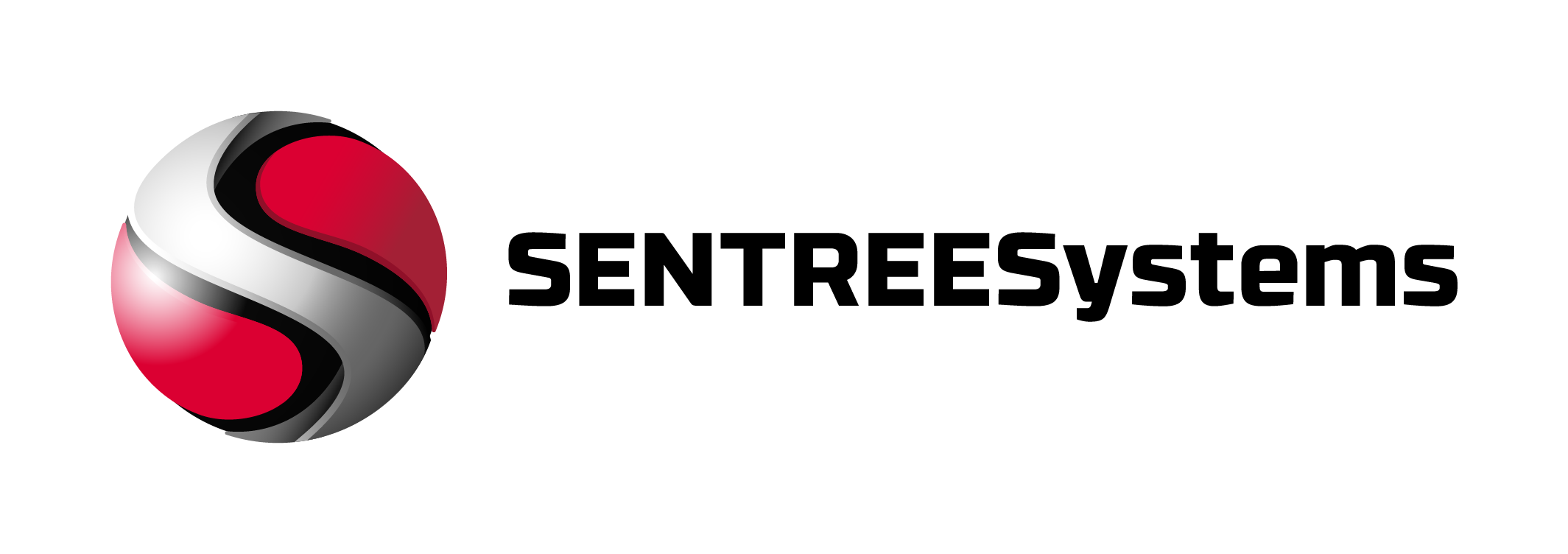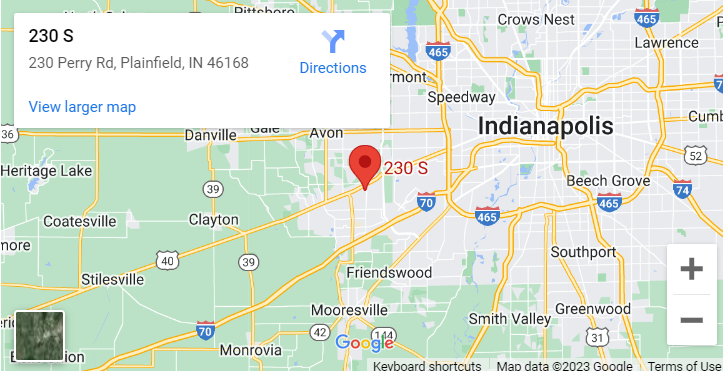In an era where digital threats loom larger with each passing day, businesses find themselves in an ongoing battle against cyber attacks. The stakes are especially high for industries handling sensitive data, such as legal, healthcare, and finance sectors. To navigate this treacherous landscape, adopting a strategy known as security in depth can provide a robust shield against a multitude of cyber threats. Originating from military principles, security in depth is a strategy that employs multiple layers of defense to safeguard information technology assets.
This approach is predicated on the understanding that a singular defense mechanism is insufficient against the sophistication of modern cyber threats. Instead, a multi-layered defense provides a more formidable barrier, significantly enhancing an organization’s security posture. Physical Security is the foundational layer, ensuring that critical IT infrastructure is guarded against unauthorized physical access through measures like biometric scans and surveillance systems. Network Security involves safeguarding the network perimeter using firewalls, intrusion detection systems, and segmentation to prevent unauthorized access and mitigate threats. Endpoint Security focuses on protecting individual devices connected to the network through antivirus software, anti-malware solutions, and regular security updates.
Key Takeaways:
- Security in Depth: A multi-layered defense strategy that utilizes multiple layers of protection to safeguard information technology assets is crucial for businesses facing the increasing threat of cyber attacks.
- Foundational Layers: Physical Security forms the base layer by securing critical IT infrastructure against unauthorized physical access. Network Security and Endpoint Security build on this foundation to protect the network perimeter and individual devices, respectively.
- Application Security and Data Security: Prioritizing secure coding practices, regular code audits, and data protection techniques like encryption and access controls are necessary to shield software applications and maintain data confidentiality, integrity, and availability.
- Identity and Access Management: Implementing IAM ensures that sensitive information is accessed only by authorized individuals, employing strategies such as multi-factor authentication and the principle of least privilege.
- Policies, Procedures, and Training: The human element is addressed through security-awareness training, clear cybersecurity policies, and detailed incident response plans, enhancing the overall security posture of an organization.

The Concept of Security in Depth
Little by little, businesses are realizing the critical importance of implementing a robust strategy known as security in depth to combat the escalating threat of cyber attacks. In an era where digital threats continue to evolve, having a multi-layered defense approach is crucial to safeguard sensitive data and critical IT infrastructure.
Historical Origins and Modern Adaptation
Any organization looking to bolster its cybersecurity posture can trace the roots of security in depth back to military strategies. The concept originally involved deploying multiple layers of defense to protect against physical attacks. In the context of cybersecurity, this approach has been modernized to address the complex and diverse nature of digital threats.
Today, security in depth involves a comprehensive and strategic deployment of defenses across various levels of an organization’s IT environment. By integrating multiple layers of security, businesses can create a formidable barrier that significantly reduces the risk of cyber breaches and data compromises.
The Multi-Layered Defense Approach
An effective multi-layered defense approach involves implementing a combination of security measures at different levels of the IT infrastructure. By encompassing Physical Security, Network Security, Endpoint Security, Application Security, Data Security, Identity and Access Management, Policies, Procedures, and Training, organizations can create a robust defense that covers a wide spectrum of potential attack vectors.
Approach: Each layer of defense plays a critical role in fortifying the overall security posture of an organization. By strategically intertwining these layers, businesses can create a comprehensive security framework that adapts to the evolving threat landscape, enhancing resilience and mitigating the impact of cyber attacks.
The Foundational Layer: Physical Security
If an organization’s critical IT infrastructure is compromised, the consequences can be catastrophic. Physical security serves as the foundational layer in the security in depth strategy, providing the first line of defense against unauthorized access to sensitive assets.
Protecting Critical IT Infrastructure
Critical to the success of physical security is the implementation of access controls that limit entry to authorized personnel only. This can be achieved through measures such as biometric scanners, access cards, and security guards stationed at key entry points. By restricting physical access to data centers, server rooms, and other critical infrastructure, organizations can significantly reduce the risk of breaches.
Physical security also encompasses the use of surveillance systems, including CCTV cameras and motion sensors, to monitor and record activities within the premises. These technologies not only act as deterrents to potential intruders but also provide valuable evidence in the event of a security incident. Such visibility and monitoring capabilities are crucial for maintaining a secure environment for IT assets.
Measures and Technologies for Physical Safeguards
Physical barriers such as fencing, locked doors, and mantraps create physical obstacles that enhance the security of IT infrastructure. These barriers can be reinforced with alarms that trigger in case of unauthorized access attempts, further fortifying the defense perimeter. Additionally, environmental controls, such as temperature and humidity sensors, ensure optimal conditions for hardware and data storage, enhancing both security and operational efficiency.
Network Security: The Digital Perimeter
To protect against cyber threats, businesses must fortify their digital perimeter through robust network security measures. Network security involves implementing defenses to secure the network infrastructure and prevent unauthorized access, ensuring the confidentiality and integrity of sensitive data.
Firewall, IDS, and Network Segmentation
Firewall: A firewall acts as the first line of defense in network security, monitoring incoming and outgoing traffic and determining whether to allow or block specific data packets based on pre-established security rules. It serves as a critical barrier against malicious activities, such as hacking attempts and unauthorized access.
Strategies to Prevent Unauthorized Access
Prevent: Implementing robust strategies to prevent unauthorized access is necessary for safeguarding the network perimeter. Utilizing next-generation firewalls with advanced threat detection capabilities, setting up intrusion detection systems (IDS) to monitor and analyze network traffic for suspicious behavior, and implementing network segmentation to isolate critical assets from potential threats are key defensive measures.
With the increasing sophistication of cyber threats, organizations must proactively implement comprehensive strategies to prevent unauthorized access to their networks. By combining firewalls, IDS, and network segmentation, businesses can establish a multi-layered defense that significantly enhances their security posture and mitigates potential risks effectively. Deploying these strategic measures helps organizations stay ahead of adversaries and protect their valuable assets against evolving threats.
Endpoint Security: Safeguarding Devices
Keep your devices protected with robust endpoint security measures that form a critical part of a comprehensive security in depth strategy. Endpoint Security focuses on safeguarding individual devices connected to the network from cyber threats, ensuring the integrity and confidentiality of sensitive data.
The Role of Antivirus and Anti-Malware Solutions
Endpoint security begins with the deployment of antivirus and anti-malware solutions on all devices within the network. These software applications are designed to detect, block, and remove malicious programs that could compromise the security of the device and the network as a whole.
By continuously monitoring for suspicious activities and known threats, antivirus and anti-malware solutions provide a critical defense layer against a wide range of cyber attacks, including malware infections, ransomware, and phishing attempts.
The Importance of Regular Security Updates
Role of Regular Security Updates
A key aspect of maintaining strong endpoint security is the regular implementation of security updates and patches for operating systems, applications, and security software. These updates often contain critical security fixes that address known vulnerabilities which cybercriminals may exploit to gain unauthorized access to devices and networks.
Application Security: Secure Coding and Maintenance
Not addressing security concerns during the development and maintenance of software applications can leave organizations vulnerable to cyber threats. Application Security plays a critical role in protecting systems and data from malicious actors seeking to exploit vulnerabilities.
Practices for Developing Secure Software
Any organization looking to enhance their security posture should prioritize secure coding practices during the software development lifecycle. This involves implementing secure coding standards, conducting regular security reviews, and integrating security testing tools into the development process. By focusing on proactive security measures from the inception of a software project, vulnerabilities can be minimized, reducing the likelihood of successful attacks.
Any neglect in secure software development practices can lead to severe consequences, including data breaches, financial losses, and reputational damage. It is imperative for developers to stay informed about the latest security threats and best practices to ensure the integrity and resilience of their applications.
Audit Procedures and Application Firewalls
Secure audit procedures and application firewalls are imperative components of robust application security defenses. Regular code audits enable organizations to identify and remediate security weaknesses in their applications, ensuring that they meet industry standards and compliance requirements. Application firewalls act as a barrier against malicious traffic, filtering out potential threats before they can reach the application.
With an effective combination of audit procedures and application firewalls, organizations can significantly reduce the risk of unauthorized access, data breaches, and other security incidents. By proactively monitoring and securing their applications, businesses can enhance their overall security posture and maintain the trust of their customers and stakeholders.
Data Security: Ensuring Confidentiality, Integrity, and Availability
Once again, data security plays a pivotal role in safeguarding sensitive information within an organization. Data security aims to uphold the confidentiality, integrity, and availability of data assets, ensuring that only authorized individuals can access, modify, or view critical information.
Encryption and Data Masking Techniques
Integrity: Encryption and data masking techniques serve as powerful tools in the arsenal of data security. Encryption transforms data into a secure format, making it unreadable without the corresponding decryption key. This ensures that even if unauthorized individuals gain access to the data, they cannot decipher its contents. Data masking, on the other hand, replaces sensitive information with fictitious data while preserving the overall format of the dataset. This technique is particularly useful for non-production environments where realistic data is required for testing and development purposes without exposing actual sensitive information.
Access Control and Data Protection Strategies
Data: Access control and data protection strategies are vital components of a robust data security framework. Implementing strict access controls ensures that only authorized users can view or manipulate sensitive data. Techniques such as role-based access control, attribute-based access control, and data loss prevention mechanisms help organizations enforce policies regarding data handling and restrict unauthorized access.
Identity and Access Management
After implementing the foundational layers of security in depth, organizations must focus on Identity and Access Management (IAM) to ensure that only authorized individuals can access sensitive information. IAM strategies are designed to minimize the risk of unauthorized access to critical systems and data, thereby reducing the potential impact of security breaches.
The Principle of Least Privilege
One key aspect of Identity and Access Management is the Principle of Least Privilege, which dictates that individuals should only be granted access to the resources necessary for them to perform their job functions. By restricting access rights to the minimum levels required, organizations can limit the damage that can be caused in the event of a breach. This principle helps prevent insider threats and unauthorized access attempts, enhancing overall security posture.
Multi-Factor Authentication and Access Policies
One of the most effective ways to bolster IAM is through the implementation of Multi-Factor Authentication (MFA) and Access Policies. MFA adds an extra layer of security by requiring users to provide multiple forms of verification before accessing sensitive information, such as a password and a temporary code sent to their mobile device. Access Policies, on the other hand, define the rules and permissions governing user access to various resources within the organization, ensuring that only authorized individuals can perform specific actions.
For instance, organizations can enforce access policies that restrict certain employees from accessing highly sensitive data or systems unless explicitly approved by higher-level management. By combining MFA with well-defined access policies, organizations can significantly reduce the risk of unauthorized access and data breaches, strengthening their overall security posture.
Policies, Procedures, and Training
Despite the advanced technological safeguards in place, a crucial aspect of a comprehensive cybersecurity strategy lies in the human factor. Policies, Procedures, and Training play a pivotal role in fortifying an organization’s defenses against cyber threats. By establishing robust guidelines, well-defined procedures, and empowering employees through training, businesses can create a culture of security awareness and preparedness.
Security-Awareness and Response Training
To effectively combat the evolving landscape of cyber threats, organizations must invest in security-awareness training for all employees. Educating staff on recognizing phishing attempts, practicing safe browsing habits, and adhering to security protocols can significantly reduce the risk of human error leading to security breaches. Furthermore, conducting regular incident response training drills ensures that employees are equipped to respond swiftly and effectively in the event of a security incident.
Establishing and Maintaining Security Policies
Any successful cybersecurity strategy is incomplete without well-defined security policies that govern the organization’s approach to data protection and risk management. These policies should outline guidelines for data handling, password management, access control, and incident response procedures. Regular review and updates to these policies are imperative to keep pace with the evolving threat landscape, regulatory changes, and technological advancements.
Training on these policies is equally critical to ensure that all employees understand their roles and responsibilities in upholding security standards. Regular refreshers and assessments can reinforce compliance and cultivate a security-conscious mindset across the organization.
Balancing Cost, Complexity, and Maintenance
Unlike a singular security solution, implementing a security in depth strategy requires a comprehensive evaluation of costs, complexities, and maintenance requirements. Finding the right balance is crucial to maximizing the effectiveness of layered defenses while ensuring operational efficiency.
Assessing the Cost-Benefit Ratio
CostBenefit analysis is important when implementing security in depth. While the initial investment may seem significant, the long-term benefits of a multi-layered defense system far outweigh the costs. By assessing the cost-benefit ratio, organizations can make informed decisions on where to allocate resources for maximum impact.
It is important to consider not only the financial costs but also the potential risks mitigated and business continuity advantages gained through a robust security posture. Prioritizing investments based on the criticality of assets and the potential impact of a security breach can help organizations optimize their security spending.
Commitment to Regular Reviews and Updates
Commitment to regular reviews and updates is fundamental in maintaining the efficacy of a security in depth strategy. Cyber threats are constantly evolving, and security measures must adapt accordingly. By staying proactive and conducting regular assessments of the security infrastructure, organizations can identify and address vulnerabilities before they are exploited.
Complexity in managing multiple layers of security can pose challenges, but it is important for ensuring comprehensive protection. Automated tools, continuous monitoring, and dedicated personnel can help streamline the maintenance process and mitigate the complexities associated with a layered security approach.
To wrap up
Conclusively, in an era where digital threats loom larger with each passing day, businesses find themselves in an ongoing battle against cyber attacks. The stakes are especially high for industries handling sensitive data, such as legal, healthcare, and finance sectors. To navigate this treacherous landscape, adopting a strategy known as security in depth can provide a robust shield against a multitude of cyber threats.
Implementing security in depth offers comprehensive protection against a wide array of threats, providing redundancy and adaptability. However, organizations must carefully balance the cost against the benefits, manage the inherent complexity, and commit to regular reviews and updates of their security measures. The efficacy of security in depth is evident in numerous case studies across different industries. These success stories highlight the strategic advantage gained through meticulous planning and execution of a layered security approach. In today’s rapidly evolving threat landscape, security in depth stands out as a critical strategy for businesses seeking to fortify their cyber defenses. By embracing this comprehensive approach, organizations can significantly enhance their resilience against cyber attacks. It’s a proactive journey towards safeguarding not just data, but the very essence of business continuity and trust. For businesses ready to take the next step, consulting with cybersecurity experts, such as those at Sentree Systems, can provide tailored advice and solutions that align with their unique needs. In the battle against cyber threats, a security in-depth strategy is not just an option; it’s a necessity.

FAQ
Q: What is the concept of security in depth?
A: Security in depth is a strategy that utilizes multiple layers of defense to protect information technology assets from cyber threats. It emphasizes the need for a comprehensive approach rather than relying on a singular defense mechanism.
Q: What are the foundational layers of security in depth?
A: The foundational layers of security in depth include Physical Security, Network Security, Endpoint Security, Application Security, Data Security, and Identity and Access Management (IAM).
Q: How does Physical Security contribute to security in depth?
A: Physical Security ensures that critical IT infrastructure is safeguarded against unauthorized physical access through measures like biometric scans, surveillance systems, and other physical access controls.
Q: What is the role of Data Security in the security in depth strategy?
A: Data Security is crucial for maintaining the confidentiality, integrity, and availability of data. Techniques such as encryption, data masking, and access controls are employed to protect sensitive information.
Q: Why is security in depth important for businesses in sensitive industries?
A: Security in depth is necessary for businesses in industries like legal, healthcare, and finance that handle sensitive data. It provides a robust shield against cyber attacks and ensures a more formidable security posture through layered defense mechanisms.



